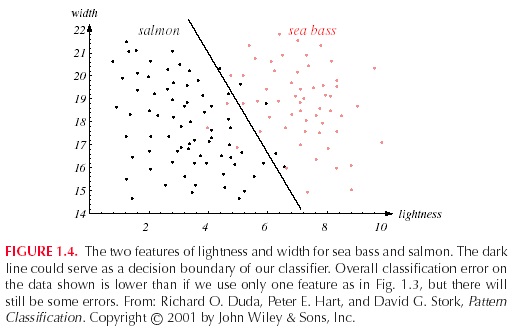Recently, I am studying Maching Learning which is our course. My English is not good but this course use English all, and so I use English to record my studying notes. And our teacher is Dr.Deng Cai and reference book is Pattern Classfication. This is only my studing notes and I want to share to this blog.
OK, first question, what is Machine Learning?
- Machine learning is the study of computer systems that improve their performance through experience.
- Learn existing and known structures and rules.
- Discover new findings and structures. (e.g Face recognition, Face recognition)
For example:


dog cat
Now I want to ask you the follow picture is what?

This is a typical case of Machine Learning (or Pattern Classification).
Second, some terminology:
- Supervised learning vs. Unsupervised learning (监督学习和非监督学习,注:这里二者的主要区别在于监督学习给出了类别而非监督学习是要自己去聚合的即自己找出类别)
-
Training data & test data (训练数据和测试数据)
-
Supervised learning: Classification, Categorization, Decision making
-
Unsupervised learning: Clustering, Matrix factorization, Topic modeling
Third, how pattern system work:
- Domain-specific knowledge (e.g Acquisition, representation)
- Data acquisition (e.g camera, ultrasound, MRI,….)
- Preprocessing (e.g Image enhancement, segmentation)
- Representation (e.g Features: color, shape, texture,…)
- Decision making (e.g use of Statistical (geometric) pattern recognition or Artificial neural networks)
- Post-processing; use of context


 Two-dimensional Feature Space
Two-dimensional Feature Space

- Simple model à large training error, less test error
- Complex model à less training error, large test error
OK, that's all.